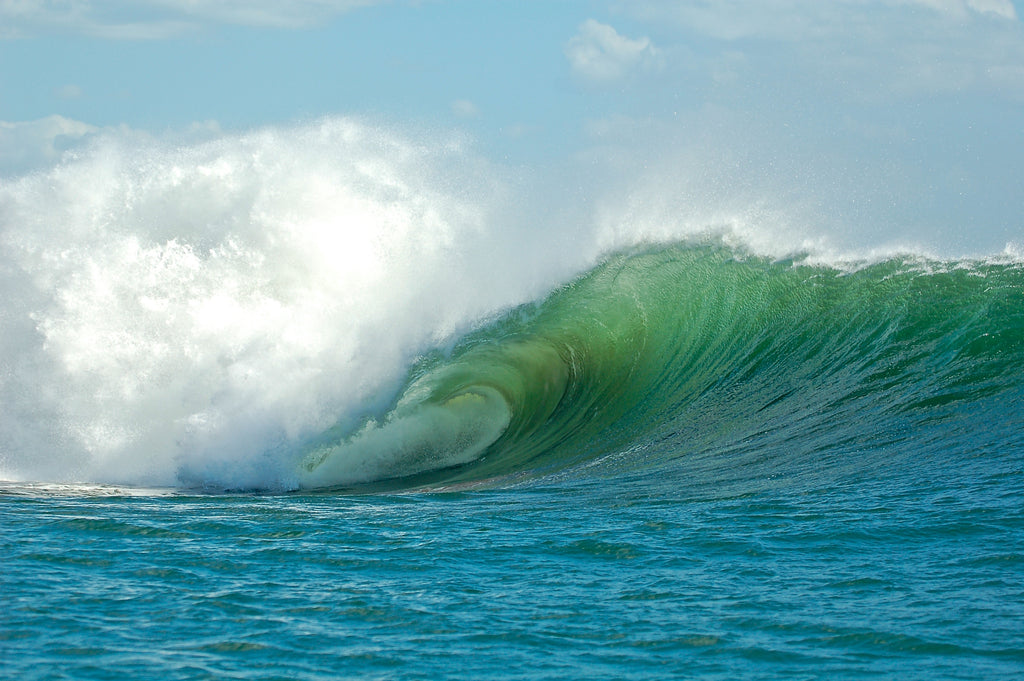
If you’ve ever surfed, swam, or tried to unsuccessfully dig a mile-deep hole in the sand, you may have looked out into the ocean and wondered, "how are waves formed?" AST is gunna strip down the surf science for you and explain in detail why these mysterious rolling globs of liquid peel smoothly along the shore, or suddenly smash down with ferocity upon your unassuming face.
What causes waves in the ocean is first and foremost, storms. Wind energy from storms travels across the surface of the ocean, creating friction and small circular eddies, eventually making enough of a “dent” in the ocean's surface to form the shape of a wave. Much like oscillating those heavy ropes at the gym up and down and seeing the flicks that blossom out to to the ends of the rope, the newly created waves travel across the surface of the water towards whatever direction the wind sends them.
The waves move across the surface, but just like that gym rope, the water is actually staying in the same place. Weird right? However, these waves are not just an above-the-surface entity. They’ve got a lot going on underneath them.
Waves move across the surface, but a particular mass of the wave extends down into the ocean directly underneath it. As a wave moves across the ocean, visualize that there are rotating circles stacked on top of each other right underneath any given wave. These rotations extend down to about half a wavelength, or the distance between the crest of a wave and the wave after it, and as the waves get closer to the shore shoaling - or the process of water getting shallower - takes over and is the catalyst in the formation of a breaking wave.

The circular energy below the wave starts to create friction with the ocean floor (at the space where the depth reaches half the wavelength) and those circles start to smash together – think of carbonation in a can trying to push its way out - projecting the wave upwards until it reaches a critical height whereby it topples over in accordance with the layout of the ocean floor. A “spilling” wave breaks over an ocean floor with a gradual slope, whereas a “plunging” wave may hit shallow water fairly suddenly – creating barreling tubes.
Winds also affect the way waves break. Offshore winds not only produce a groomed surface, but they give some extra time in holding the wave up slightly from breaking when it would. It’s kind of like the wave is getting a bit of a facelift. Onshore winds are the antipode – they topple the wave over and accelerate the breaking process, creating that messy, jumbled look unfavorable to surfers and swimmers alike.
Sometimes waves are big (when there are large storms off the coast with heavy wind), and sometimes they are small in the absence of large storms. But no matter how large or small, they are always sure to break, and always sneak up on even the most experienced of ocean dwellers.
Who are we, you ask? We're your wave and travel gurus. AST is a surf and adventure travel company with start to finish professionally guided service at the best breaks and boutique digs in the world. We're crazy passionate about land and sea, and we'd love to show you the world through our travel-junkie eyes.
Have questions? Contact us and we're happy to help.


